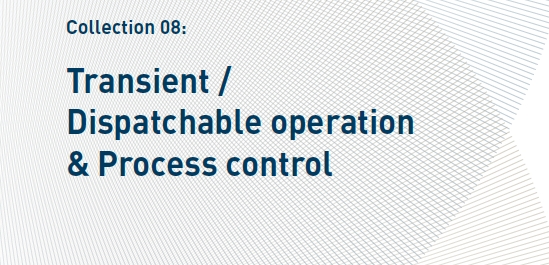5. Experimental results of transient testing at the amine plant at Technology Centre Mongstad: Open-loop responses and performance of decentralized control structures for load changes (2018)
Rubén M. Montañésa,⁎, Nina E. Fløb, Lars O. Norda
aDepartment of Energy and Process Engineering, NTNU – Norwegian University of Science and Technology, Kolbjørn Hejes v. 1B, 7491, Trondheim, Norway b Technology Centre Mongstad, 5954, Mongstad, Norway ⁎Corresponding author

International Journal of Greenhouse Gas Control 73 (2018) 42–59
Available online 10 April 2018
1750-5836/ © 2018 Elsevier Ltd. All rights reserved.

Flexible operation of combined cycle thermal power plants with chemical absorption post combustion CO2 capture is a key aspect for the development of the technology. Several studies have assessed the performance of decentralized control structures applied to the post combustion CO2 capture process via dynamic process si- mulation, however there is a lack of published data from demonstration or pilot plants. In this work, experiments on transient testing were conducted at the amine plant at Technology Centre Mongstad, for flue gas from a combined cycle combined heat and power plant (3.7–4.1 CO2 vol%). The experiments include six tests on open- loop responses and eight tests on transient performance of decentralized control structures for fast power plant load change scenarios.
The transient response of key process variables to changes in flue gas volumetric flow rate, solvent flow rate and reboiler duty were analyzed. In general the process stabilizes within 1 h for 20% step changes in process inputs, being the absorber column absorption rates the slowest process variable to stabilize to changes in reboiler duty and solvent flow rate. Tests on fast load changes (10%/min) in flue gas flow rate representing realistic load changes in an upstream power plant showed that decentralized control structures could be employed in order to bring the process to desired off-design steady-state operating conditions within (< 60 min). However, oscillations and instabilities in absorption and desorption rates driven by interactions of the capture rate and stripper temperature feedback control loops can occur when the rich solvent flow rate is changed significantly and fast as a control action to reject the flue gas volumetric flow rate disturbance and keeping liquid to gas ratio or capture rate constant.
This article is behind a paywall. For futher information: https://linkinghub.elsevier.com/retrieve/pii/S1750583618300306

